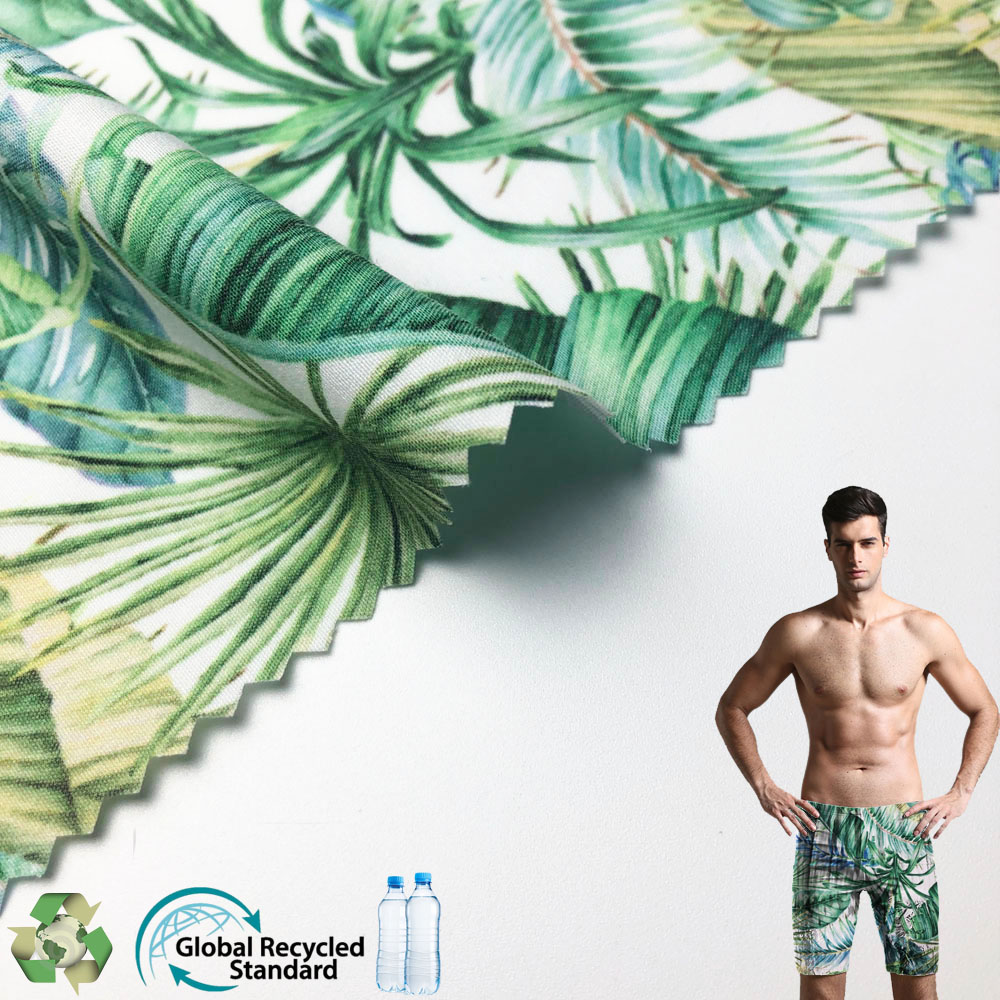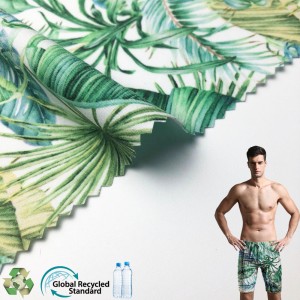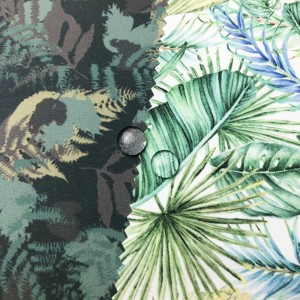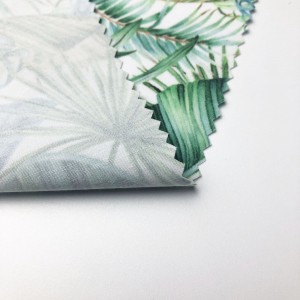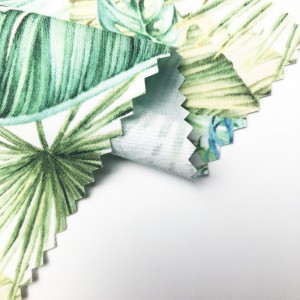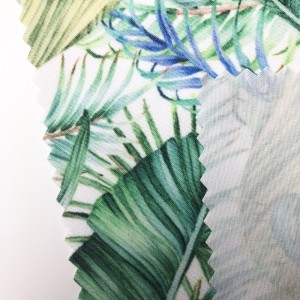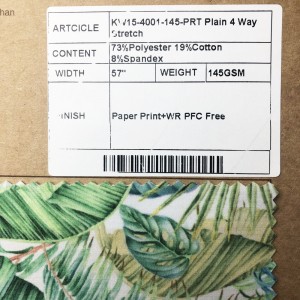| PRODUCT CATEGORY | Beach Wear Fabric | |||||
| ITEM NO | KW15-4001-145 | |||||
| Supply Type | Make-to-Order | |||||
| Material | 73%Polyester 8%spandex 19%Cotton | |||||
| Weight | 145GSM | |||||
| Width | 73/75″ | |||||
| Density | Customized | |||||
| Yarn | 40D | |||||
| Feature | Breathable/High Elasticity/High Quality High Color Fastness |
|||||
| Use | Swimwear/Garment/Sportswear/Yoga wear | |||||
| Market | USA/Canada/Australia/UK/Germany | |||||
| Certificate | RSG/SGS | |||||
| Place of Origin | China (Mainland) | |||||
| Packaging Details | packing in rolls with plastic bags or base on your requirement |
|||||
| Payment | L/C T/T | |||||
| Print Patter/ Custom design | Sublimation print & Digital print as custom design | |||||
| MOQ | 100 | |||||
| C0-Brand | Adidas/Nike/H&M/VANS/Decathlon | |||||
| Sample Service | Free | |||||
| Customized Pattern | Support | |||||
| OUR SERVICE & ADVANTAGES | Free sample available. Customized pattern, width, weight. Quick delivery. Competitive price. Good sample development service. Strong R&D and Quality Control team. |
|||||
| Process Of Production | 1.Contact us 2.Developments 3.PO&PI 4.Bulk production 5.Payment 6.Inspection 7.Delivery 8.Long partner |
|||||
We’ve all seen it–on reusable shopping bags, t-shirts, leggings, or backpacks: “This product was made using recycled water bottles!” On other items, you’ll see this type of material called anything from rPET, rePET, to rePETE. No matter the name, this term describes material made using recycled PET plastic.
It sounds great, but what does it actually mean? How can water bottles be made into a fabric (that you’ll actually want to wear)? Is this process sustainable? What are the benefits of buying products made from rPET?
What is PET?
Let’s start by learning what PET is. This is an abbreviation for the much longer (much less fun) term, polyethylene terephthalate; a polymer of ethylene glycol and terephthalic acid. Clearer terms? PET is the most common type of plastic resin. To create virgin PET, producers extract crude oil and natural gas from the Earth, then process and heat it to form a molten liquid. They spin this liquid into fibers to create polyester fabric, or they mold and solidify it into PET plastic containers.
As a fiber, polyester can be used to make anything from clothing and blankets to sleeping bags and carpeting. We usually call it polyester in this form, whereas in molded containers, PET is the more common name. In its plastic form, PET is used to hold anything from your favorite peanut butter or salad dressing to cleaning solution, mouthwash, and medication. Those disposable water bottles? PET. Chances are, most plastic containers in your house are made of this common plastic!
So…where does sustainability come in?
PET is considered a highly recyclable plastic. Used PET containers can be washed and re-melted into plasma, from which new items can be crafted. However, it can be really hard to collect clean, high quality plastics! This means very few PET containers can re-enter the cycle as food-grade containers. Less than half of plastic bottles purchased each year make it to recycling facilities. Only around 7% of those recycled are turned back into usable bottles.
Manufacturers may not always be able to turn all salvaged plastic into new containers, but these other plastics may find a new calling as recycled polyester fabric, or rPET. This recycled polyester fabric can be used to make products including backpacks, leggings, t-shirts, and reusable grocery bags!
The good about rPET
For starters, PET is super easy to recycle. You can usually distinguish PET products by their #1 recycling label, and most recycling programs in North America and Europe accept them, depending on their shape. (Side note: Everything has to be sorted, so accidentally recycling trash doesn’t help. Check your local guidelines to learn what can and can’t be put in your bins!) We have enough plastic trash in our landfills already. By recycling PET products, we’re offering them a second life!
When companies choose to use rPET in their products, they provide a market for recycled plastics. Like any business, recycling facilities have to make money–if they’re not turning a profit from the materials they collect, they’ll stop collecting them. When consumers purchase products made with recycled content, they’re sending a message to companies that they value their sustainability efforts! By creating awareness and demand for recycled products, we help solidify recycling programs and recycled goods as valuable pieces in the production process.
Recycling plastics also helps decrease the amount of plastic waste that enters landfills. Plastics in landfills take thousands of years to break down, and can leach toxic chemicals into the Earth. These chemicals can make their way into groundwater reserves, endangering both humans and animals. Plastics that “break down”, only do so into smaller pieces of plastic, which are still harmful to the ecosystems they may end up in.
Recycling not only provides a better option than the landfill, it also has the ability to greatly decrease our resource extraction. Over 60% of first-time PET production is used to create polyester textiles. By using PET that has already been in circulation, we’re offsetting the amount of new PET that needs to be created.
Energy is a big part of this equation, too! Creating a plastic water bottle from 100% recycled content uses 75% less energy than its virgin counterpart. Although some energy and water is still needed to process these plastics into new forms (which is why we love reusable!), the amount is significantly less than creating first-time plastics. This translates to less resource extraction, which protects the natural landscapes where oil and natural gas are extracted. This also means that there is less carbon emitted during the creation of new products. One year’s worth of recycling common plastics in the US can create the equivalent energy savings of taking 360,000 cars off the road.
In addition to the production of yoga fabrics, we also have swimwear, beach pants, sportswear, running wear, ski wear, mountaineering wear fabrics.Welcome to consult us
FAQ:
Ordering Information
Payment: we usually accept T/T 30%
Packing: In roll packing with tubes inside and plastic bags outside or according to customers’ request.
Delivery Time
LAB DIPS takes 2-4 days; STRIKE OFF takes 5-7 days. 10-15days for sample development.
Plain dye color: 10-15 days.
Printing design: 5-10 days.
For urgent order, could be faster, please send email to negotiate.
Why choose us/FEIMEI?
We buy yarn, produce greige fabric and dying or print by ourselves, which makes more competitive price and faster delivery.

